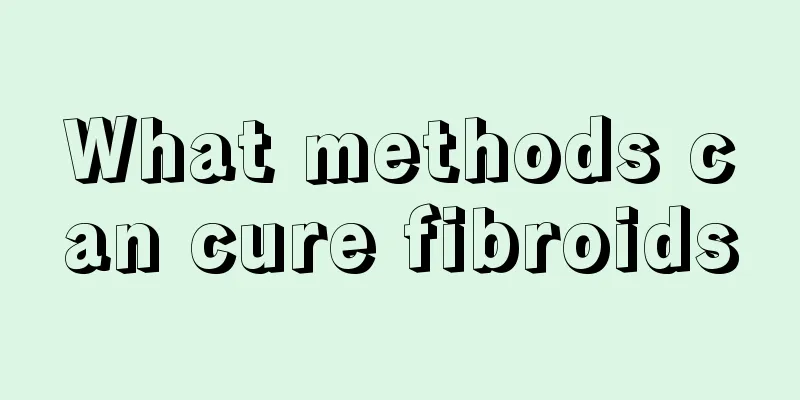What diseases does orthopedics treat?

|
If you are sick, you need to go to the hospital for treatment. However, people who have been to the hospital know that there are many departments in the hospital. Under each large department, there are many small departments. For those who are not familiar with it, they often don’t know which department to go to for their disease after they are sick. There are many orthopedic departments. Some hospitals have subdivided orthopedics, while some hospitals have not. What diseases do orthopedics generally treat? What diseases does orthopedics treat? Orthopedic diseases cover a wide range: currently, the orthopedic departments of general tertiary hospitals are specialized and refined, such as spine department, joint department, traumatology department, bone disease department, sports medicine department, pediatric orthopedics, etc. The spine department mainly treats patients with lumbar spondylosis, thoracic spondylosis and cervical spondylosis, scoliosis correction, etc.; the joint department treats hip and knee joint diseases, etc.; the trauma department generally treats limb fractures and vascular, nerve, and tendon injuries, etc.; the bone disease department treats femoral head necrosis, joint tuberculosis, etc.; sports medicine can treat various ligament and meniscus injuries, etc., and pediatric orthopedics treats children's congenital malformations, limb fractures, etc. Common orthopedic diseases Patellar fracture, ulnar nerve injury, congenital coxa vara, replantation of severed fingers, interdigital neuralgia, fracture of the posterior lateral tubercle of the talus, thumb reconstruction, congenital tibial agenesis, tibialis rigidus, infectious costochondritis, temporomandibular joint ankylosis, rheumatic fever, orbital impaction fracture, popliteal tendonitis, metatarsophalangeal joint pain, posterior tibial neuralgia, anterior Achilles tendon bursitis, fibromyalgia, bursitis, infectious arthritis, navicular osteochondrosis, postural low back and leg pain, Reiter's syndrome, causalgia, fibromyalgia syndrome, etc. (1) Fractures: clavicle fracture, acromioclavicular dislocation, shoulder dislocation, humeral surgical neck fracture, humeral shaft fracture, humeral supracondylar fracture, elbow dislocation, radial head subluxation, forearm fracture, distal radius fracture; hip dislocation, femoral neck fracture, intertrochanteric fracture, femoral shaft fracture, patellar dislocation, patellar fracture, knee ligament injury, knee meniscus injury, tibial plateau fracture, tibia and fibula shaft fracture, ankle fracture, ankle sprain, foot fracture; spine and pelvic fractures. (2) Pyogenic infections of bones and joints: purulent osteomyelitis (acute, chronic, localized, sclerotic, post-traumatic), purulent arthritis. (3) Bone and joint tuberculosis: spinal tuberculosis, hip tuberculosis, knee tuberculosis. (4) Non-suppurative arthritis: osteoarthritis, ankylosing spondylitis, Kaschin-Beck disease, pine caterpillar arthritis. (5) Bone tumors: benign bone tumors (osteoma, osteoid osteoma, enchondroma), giant cell tumor of bone, primary malignant bone tumors (osteosarcoma, chondrosarcoma, fibrosarcoma of bone, Ewing sarcoma, non-Hodgkin's lymphoma, myeloma, chordoma), metastatic bone tumors, bone tumor-like lesions (bone cyst, aneurysmal bone cyst, eosinophilic granuloma of bone, fibrous dysplasia of bone). (6) Osteophyte: Osteophyte is a disease caused by the degeneration and degeneration of soft tissues such as cartilage, intervertebral discs, ligaments, etc. that constitute the joints, the formation of bone spurs at the edges of the joints, hypertrophy of the synovium, etc., resulting in bone destruction, secondary bone hyperplasia, and joint deformation. When subjected to abnormal loads, it causes symptoms such as joint pain and limited mobility. There are two types: primary and secondary. (7) Rheumatism: Rheumatoid arthritis Rheumatoid arthritis, also known as rheumatoid, is an autoimmune inflammatory disease with chronic, symmetrical, polysynovial arthritis and extra-articular lesions as its main clinical manifestations. The disease often occurs in small joints such as hands, wrists, and feet, with repeated attacks and symmetrical distribution. |
<<: What diseases does dermatology treat?
>>: Why does my stomach hurt when I drink Coke?
Recommend
Pain in the middle of the chest
There are many reasons for chest pain, and the lo...
How to treat a constitution prone to heatstroke
The dog days of summer can be said to be the time...
Can you drink alcohol after eating plums
Plums are very common in our daily life. Plums ar...
Can people with scars use cupping?
People with scar-prone constitutions are difficul...
What is the reason for chest tightness, long breath and hiccups
Because chest tightness often manifests itself as...
How to clean silver jewelry that turns black
Women love jewelry very much, especially silver j...
Does normal people's urine have foam?
Some people have heard that there is foam in the ...
What is the normal value of alpha-fetoprotein quantitative? These ranges are normal
The normal quantitative value of alpha-fetoprotei...
How to kill sturgeon
Sturgeons are slow-moving bottom-dwelling fish th...
Introduction to turbinate reduction surgery
We all know that many women love beauty very much...
What are the advantages of interventional treatment for primary liver cancer? The three major advantages of interventional treatment for primary liver cancer
Interventional treatment of primary liver cancer ...
Is there any relationship between brain glioma and brain trauma? No relationship
There is no relationship between brain glioma and...
What are the precautions for checking mean corpuscular volume
The mean corpuscular volume test is mainly used i...
Lung cancer is not that scary if you find the right treatment method
When it comes to lung cancer, everyone is terrifi...
Do soybeans need to be cooked to make soy milk?
Soy milk is a common drink in our daily life. The...









